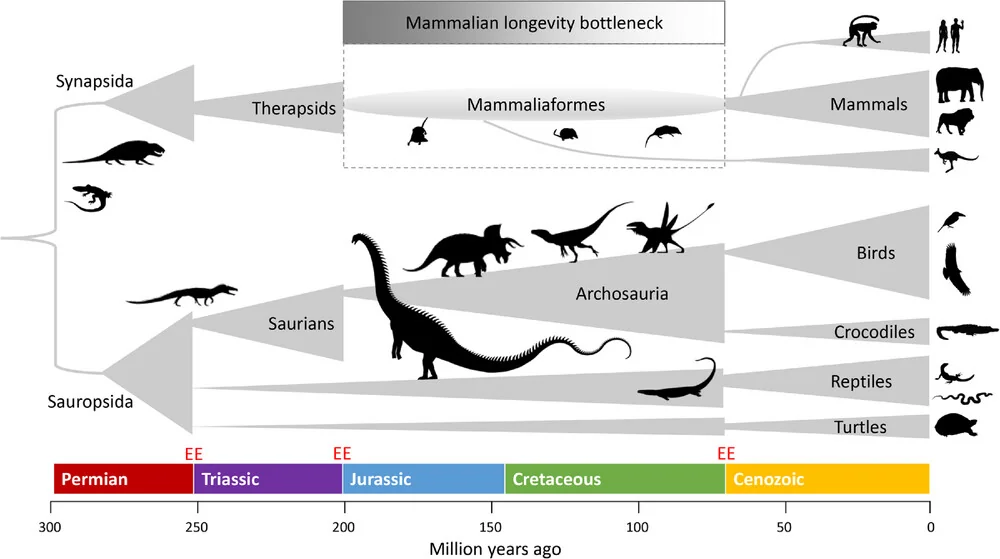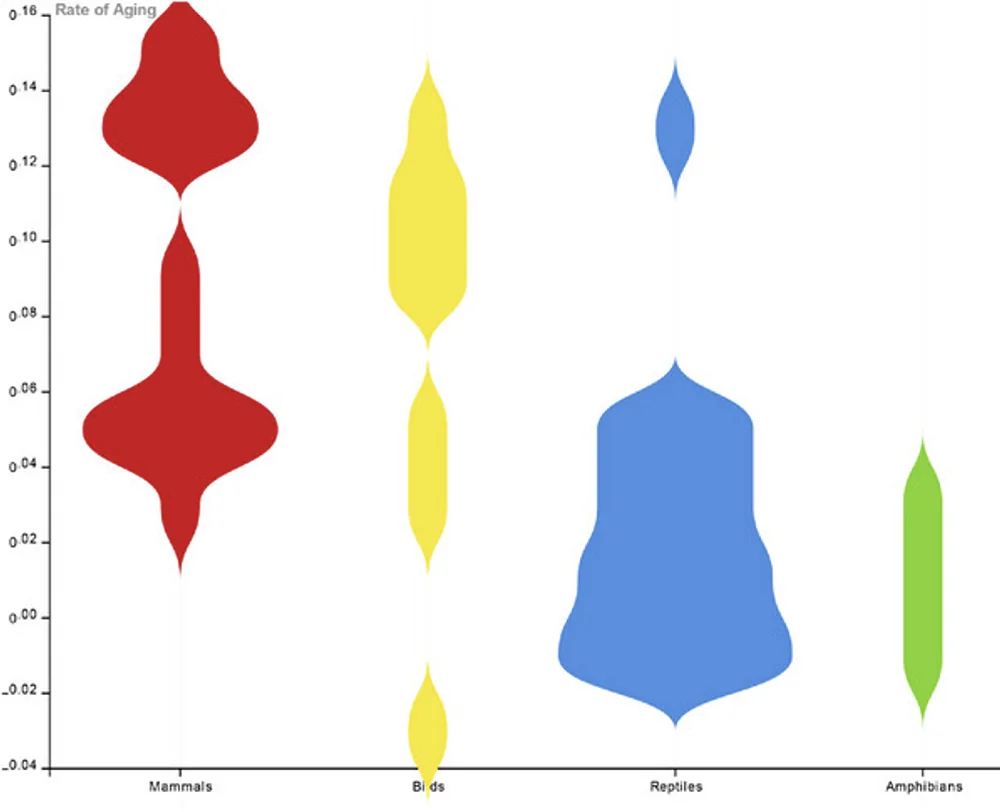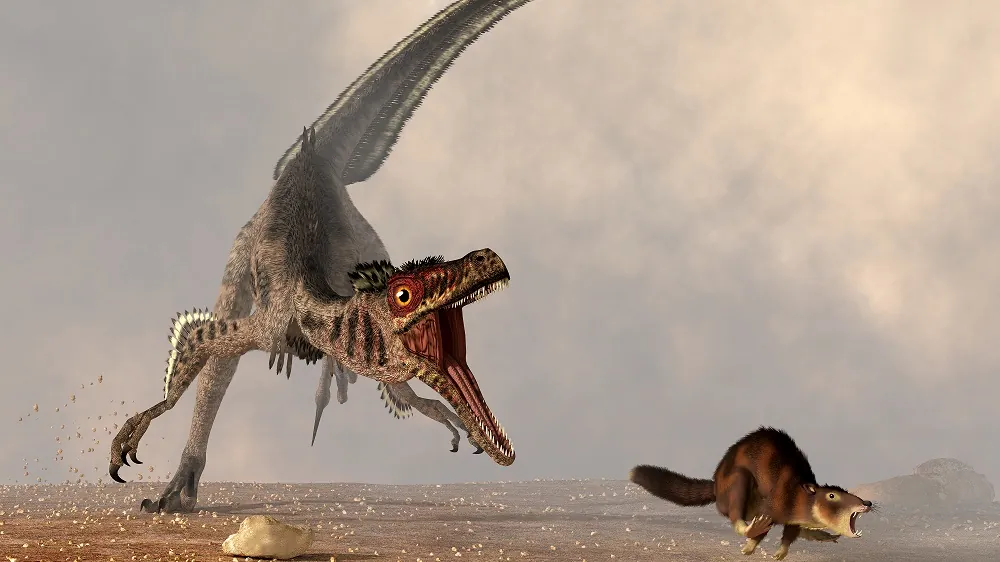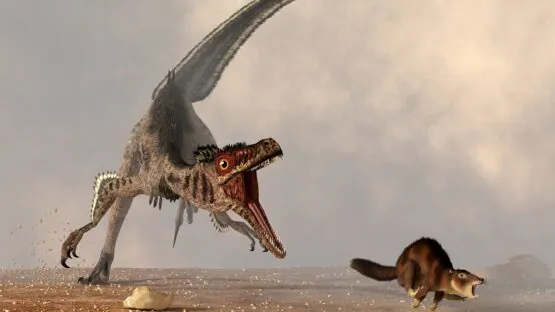A prominent geroscientist suggests that more than 100 million years of saurian domination might have deprived mammals of longevity-promoting traits that are found in today’s reptiles [1].
The longevity bottleneck
Today, mammals rule the world, but, sadly, we only have an average of 80 years to enjoy our superiority. That’s a lot by mammalian standards: humans are one of the longest-lived mammals, surpassed only by some cetaceans. However, animals that have remained largely unchanged for hundreds of millions of years, such as some reptiles, age far slower than we do.
According to the renowned geroscientist Dr. João Pedro de Magalhães, the roots of mammals’ generally underwhelming lifespans may lie in the roughly 100 million years when the roles were reversed and giant reptiles ruled the Earth. During that period, mammals were small, subdued, mostly nocturnal, and short-lived creatures. De Magalhães’ hypothesis, which he calls “the longevity bottleneck”, was published in the journal BioEssays.
Live fast, die young
It is a logical conjecture that evolution has shaped the aging patterns of species. For instance, if you have a lot of enemies, it pays off to reproduce quickly before they get to you. Genetic traits that confer longevity are not selected for, and even worse: evolution might select for traits that help an animal survive when it’s young but become detrimental as it gets older; this is known as antagonistic pleiotropy. This might be a major reason why maximum lifespan positively correlates with body size across species.
De Magalhães suggests that during that very long period of time when “live fast, die young” was mammals’ pre-eminent evolutionary strategy, many longevity traits that flourished in dinosaurs were lost in mammals. Those may include various regeneration abilities, such as constantly growing new sets of teeth. The inability to do this limits lifespan in today’s mammals, such as elephants who, in nature, often die of starvation after grinding down their last set of teeth.
Another interesting example is a photolyase DNA protection system, which was lost in placental mammals during the time of the dinosaurs. Photolyases are enzymes that repair the damage to DNA caused by exposure to ultraviolet light. Early mammals might have lost this specialized defense mechanism due to their nocturnal way of life, although this remains a speculation. Other longevity-promoting traits common to reptiles include oocyte regeneration, limb regeneration, and cancer resistance.

Not even close to birds and reptiles
Reptiles include some of the world’s champions in longevity, such as the Galapagos turtle, whose maximum lifespan is estimated to be close to 200 years. This and many other reptile species are thought to display negligible senescence [2]: their chances of dying do not increase with age (in humans, they double roughly every eight years). Some stay reproductive and keep growing during their entire life. In mammals, only the famous naked mole rat is suspected of being endowed with negligible senescence [3], although recent research has put this in doubt, as they do show some signs of aging and experience epigenetic aging.
One of the alternative explanations for mammals’ shorter lifespan might be that they are warm-blooded, as opposed to cold-blooded reptiles and amphibians. High body temperature might indeed accelerates several processes of aging. However, de Magalhães correctly mentions the fact that birds, who are also direct descendants of dinosaurs, are notoriously long-lived for their body sizes, despite being warm-blooded and leading energetically demanding lives.
After mammals were freed from the “yoke” of dinosaurs, the class exploded into a remarkable variety of body sizes and aging rates. However, the slowest-aging mammals still don’t get anywhere near the slowest-aging reptiles, birds, and amphibians:

Making sense of aging
While de Magalhães’ hypothesis might not bear immediate implications for geroscience, it can help us make sense of the longevity landscape in the animal kingdom, including in humans. One of the cutting-edge directions in geroscience is adapting longevity-promoting mechanisms found in animals for humans.
We have covered some of the exciting advances in this field in our interviews with Vera Gorbunova and Ashley Zehnder. For example, the photolyase protection system that de Magalhães mentions was found to improve repair in transgenic mice [4]. De Magalhães, who is currently Professor of Molecular Biogerontology in the Institute of Inflammation and Ageing at the University of Birmingham, said about his idea:
The ‘longevity bottleneck hypothesis’ may shed light on evolutionary forces that have shaped the way that mammals have aged over millions of years. While we see humans among different species that are among the longest living animals, there are many reptiles and other animals that have a much slower ageing process and show minimal signs of senescence over their lives. Some of the earliest mammals were forced to live towards the bottom of the food chain, and have likely spent 100 million years during the age of the dinosaurs evolving to survive through rapid reproduction. That long period of evolutionary pressure has, I propose, an impact on the way that we humans age.
Literature
[1] de Magalhães, J. P. (2023). The longevity bottleneck hypothesis: Could dinosaurs have shaped ageing in present-day mammals?. BioEssays, 2300098.
[2] da Silva, R., Conde, D. A., Baudisch, A., & Colchero, F. (2022). Slow and negligible senescence among testudines challenges evolutionary theories of senescence. Science, 376(6600), 1466-1470.
[3] Buffenstein, R. (2008). Negligible senescence in the longest living rodent, the naked mole-rat: insights from a successfully aging species. Journal of Comparative Physiology B, 178, 439-445.
[4] Schul, W., Jans, J., Rijksen, Y. M., Klemann, K. H., Eker, A. P., De Wit, J., … & Van der Horst, G. T. (2002). Enhanced repair of cyclobutane pyrimidine dimers and improved UV resistance in photolyase transgenic mice. The EMBO journal, 21(17), 4719-4729.




